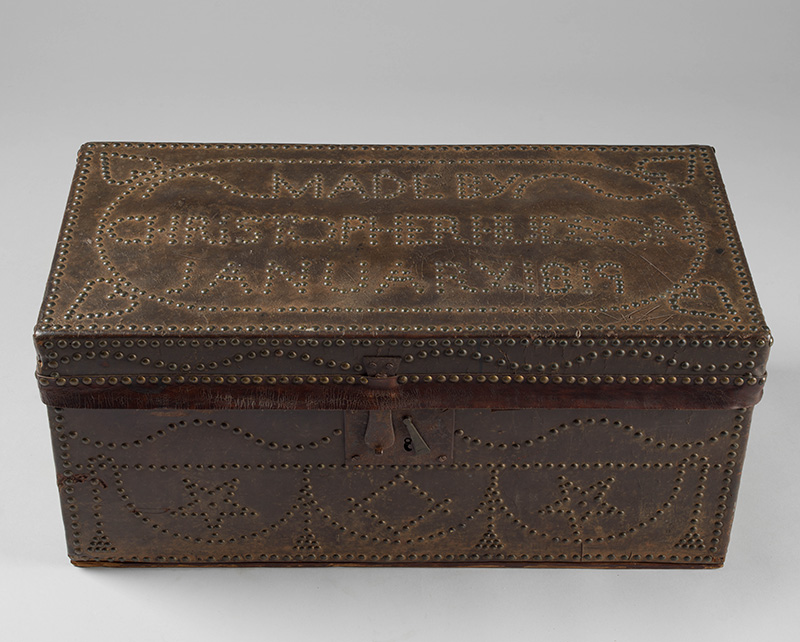Trunk

| Maker | Christopher Hudson |
| Date of Creation | 1819 |
| Location | Richmond, Virginia |
| Materials | Yellow pine, leather, brass, iron, paper, and textile |
| Institution | The Colonial Williamsburg Foundation |
| Credit Line | Museum Purchase, The Friends of Colonial Williamsburg Collections Fund |
| Accession Number | 2024-379 |
| Photo Credit | Colonial Williamsburg Foundation |
The brass tacks that typically adorn leather trunks and boxes from the 16th–19th centuries were both ornamental and practical, holding the leather to the wooden substrate of the trunk. Christopher Hudson, a Richmond, VA, cabinetmaker, used the tacks to advertise his authorship of this trunk in 1819. As a cabinetmaker, Hudson likely produced fine mahogany furniture, but none has been identified yet. An elegant mahogany card table of c. 1815 labeled by Hudson’s partner James Rockwood descended in the Stewart family of “Brook Hill”—the family’s Richmond home (MESDA S-6165). Was this trunk the sole example of Hudson’s work in this line or did he produce more trunks yet unidentified as his work? Trunks were the ubiquitous method of transporting personal belonging in the era but rarely survive. Only one other trunk manufactory is known in Richmond during the early 1810s. Peter Cottom advertised that he had a trunk manufactory at his book and stationary store in 1813. Four years later, Cottom advertised for the return of William White, and enslaved man described as a “rough carpenter” who “has been employed in making and finishing trunks.” The trunks produced in Cottom’s trunk manufactory were almost certainly produced by White and perhaps other enslaved workers rather than Cottom, a stationer and book seller.
